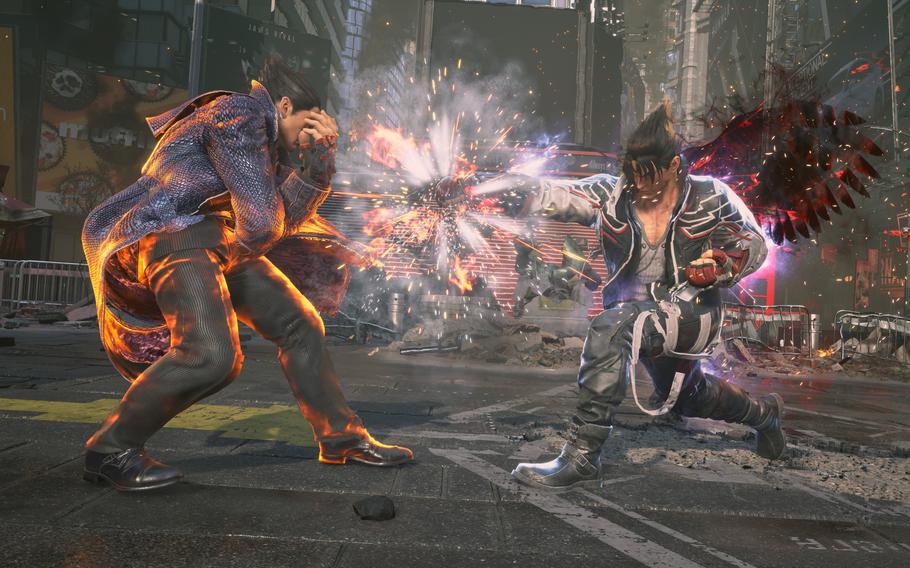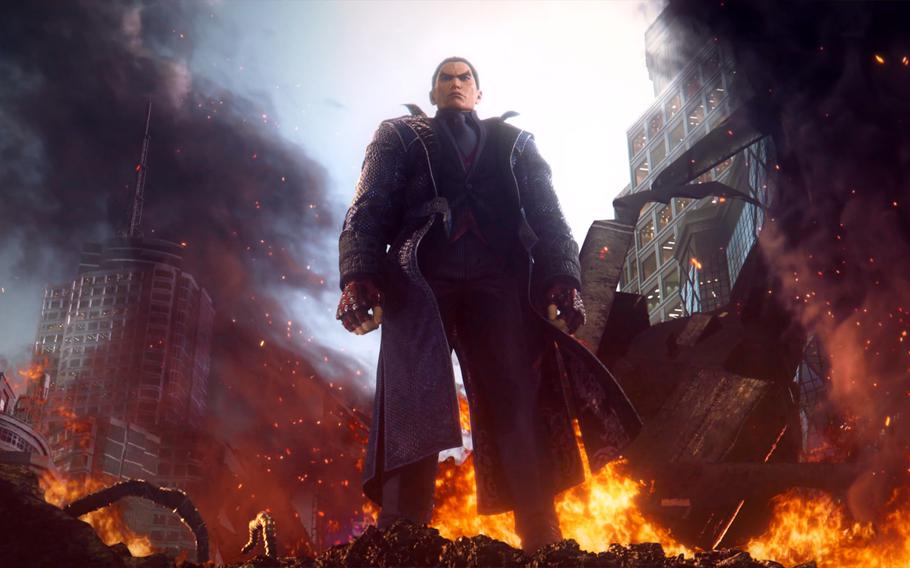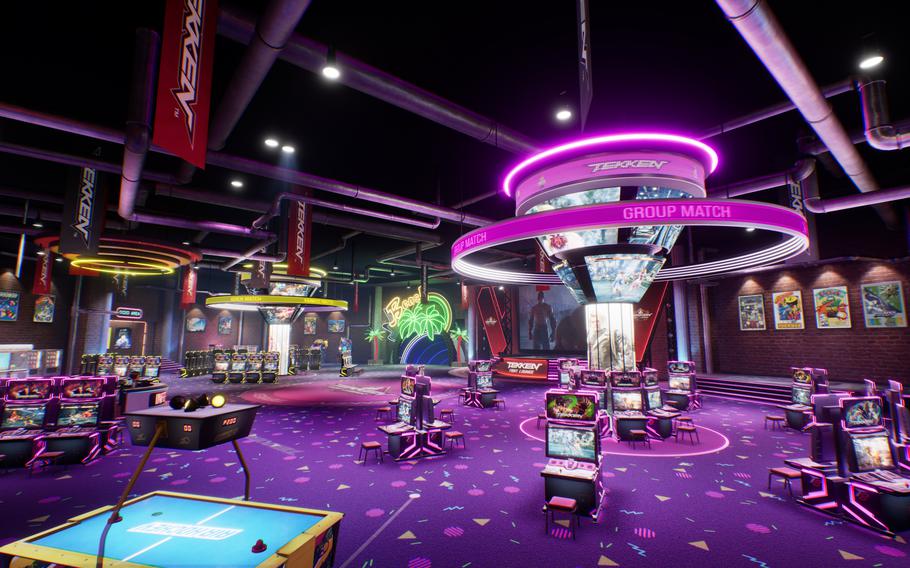
Jin Kazama, right, has to come to grips with his power as he battles his father Kazuya Mishima in Tekken 8. (Bandai Namco)
At a certain point, one has to stop caring whether Tekken makes any sense and just go with the flow. That thought came across my mind as I watched Brian Cox from “Succession” narrate a catchup video on the current state of the saga.
The nearly 30-year-old franchise boils down to absurd Mishima family disputes in which father and son fight each other and toss the loser off a cliff. That doesn’t necessarily mean they kill each other because just like any soap opera no one traditionally dies in Tekken. They just come back angrier, more ruthless and perhaps with new abilities.
A dormant devil gene lies within the Mishimas’ bloodline, and it awakens in some family members when they’re in a crisis. It’s given them unbelievable durability. As for the rest of the 32-character roster, each as their own personal story that players can access in the Character Episodes option, but these don’t rise to the level of the epic war between Jin Kazama and his father, Kazuya Mishima.

The main narrative of Tekken 8 is driven by a father-and-son clash that plays out within a story mode titled “The Dark Awakens.” (Bandai Namco)
The conflict between the two drives the story mode titled “The Dark Awakens.” It takes place across 15 chapters, in which players mostly take the role of Jin but have a chance to dabble with other characters within a woven narrative. They control characters in a tournament story arc while in Chapter 10 an alliance of fighters battles Kazuya’s G Corporation army. Again, everything’s over the top but it’s enjoyable if you acknowledge this is all camp.
As for the fighting system, the developers kept elements of the previous iteration but tweaked them to create combat that rewards aggressive play. Rage Arts acts as a comeback mechanic that’s activated when health is below 25% and deals massive damage when it connects. It’s also accompanied by show-stopping animation. Meanwhile, Power Crush is back and it’s a way for players to fend off aggressive opponents with its ability absorb damage and connect with an attack.
All of this is done with impressive visuals on the Unreal 5 engine. It’s one of most impressive-looking titles in the genre, and it’s a title full of just the right visual flourish without becoming gauche.
.jpg/alternates/LANDSCAPE_910/TK8_Feng_Battle%202.jpg)
The Unreal 5 engine allows for impressive-looking visuals in Tekken 8. (Bandai Namco)
The new Tekken 8 feature is the Heat System, which can be activated at any time through a button or via a combo. The Heat State opens up more powerful moves and allows players to deal damage to blocking foes. The only issue is that it doesn’t last long and can be only used once per round. It’s easy for novices to pick up, but experts will thrive as they figure out how to deal damage and open up adversaries to combos. The system introduces a cat-and-mouse element as players figure out when to use it.
Producer Katsuhiro Harada also tries to make Tekken 8 more newbie-friendly with an alternate control scheme called Special Style. It lets players perform juggling air combos and other complex maneuvers with a few button presses. It’s also a way for players to try out character without feeling as though they need to spend hours in practice mode to memorize combos.

A new mode called Arcade Story allows players to create an avatar and delve into the fighting game community. (Bandai Namco)
One of the more interesting elements is how it introduces a new mode called Arcade Story. This is where players create an avatar and delve into the fighting game community. It’s reminiscent of the online mode in Street Fighter 6 except it has a simplistic plot in which players work up the ranks. They start off with friends at a small neighborhood arcade and enter tournaments, make a name for themselves and climb the ladder challenging others at higher-profile venues.
Arcade Story is actually a good way for novices to jump into the game as it slow-rolls players through the aspects of the fighting systems. Unfortunately, it’s nowhere near as comprehensive or as easy to use. Despite that, the mode has another benefit: It’s a path for newcomers to ease into online play. Arcade Story mimics the experience, and through its characters, it also highlights aspects of fighting game culture.
Arcade Story allows players access to a wide variety of customization. (Bandai Namco)
It’s not all about being the best fighter. Sometimes, there are other reasons people play. One element the Story highlights is customization. In Tekken 8, players can customize the look of any fighter by unlocking costumes or spending fight money that they earn through different modes. The gear drastically changes the look of characters, allowing players to express themselves.
Most of all, gamers just want to play Tekken 8 for fun. Not everything has to be a serious tournament and the developers brings back a mode called Tekken Ball, which adds a volleyball-ish element to the fighting game. It’s a blast and silly at times, but that’s something that Tekken has come to embrace. It’s a series that has turned the raw and awkward plot it has built into a funny and campy strength.
Platforms: PlayStation 5, Xbox Series X/S, PC
Online: tekken.com